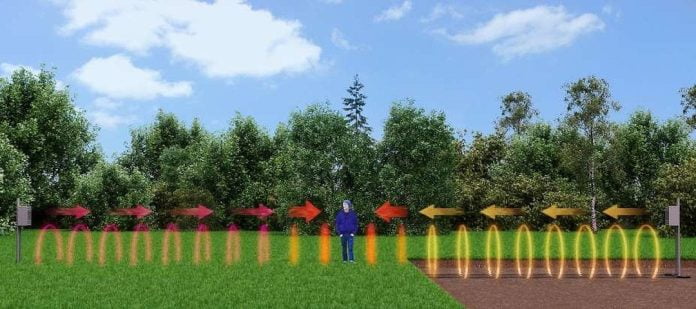Fiber Sensys TD100 BLS is a perimeter intrusion sensor built around a pair of ported coaxial cables, running parallel to each other to form a long sensor.
The sensor cable pair comprises a standard coaxial cable with an aperture or a continuous slot in the outer conductor to allow RF to couple between the signal traveling inside the cable to a bound surface wave travelling outside and adjacent to the cable.
Processors at each end of the cable pair sense the wireless signatures of the field between the cable pair and use End-to-End Correlation (E2EC), compare results. E2EC rejects of multipath interference, which occurs when a metal object is too close to the sensor. By comparing the locations of the events, TD100 rejects these nuisance sources.
E2EC collects 4x the target data when compared to systems that only transmit and receive from one end of the cable pair and this additional data is used to improve signal processing results meaning better targeting and fewer false alarms. Importantly, each TD100 system has its own RF identifier, which allows the system to reject RF signals from other sources, including other TD100 systems.
There are 2 transmitters and receivers in each processor – one TX/RX pair looking left and the second TX/RX pair looking right. A signal is transmitted and received from both ends of the sensing cable pair allowing the use of E2EC, enabling a linear port or aperture down the entire sensing cable’s length.
RF is transmitted and received from both ends of the sensing cable and these 2 signals are averaged to ensure linear sensing throughout the detection area – it’s not a variable grade aperture as in older technologies. TD100 sensing cable’s uniformed construction allows the cable to be used at any point in the system with consistent results.
The TD100 has multiple power supplies – if one power supply fails, others will continue to provide power to all areas of the system so the system will continue to operate if power is cut. If a processor fails, the processors on the opposite end of the cable pair will continue to provide detection coverage.
Making installatio easy, TD100 installation requires no complicated overlapping cables at the processors’ start locations and TD100 does not require in-line terminations.
#sen.news #SEN #SENnews #security #electronics









